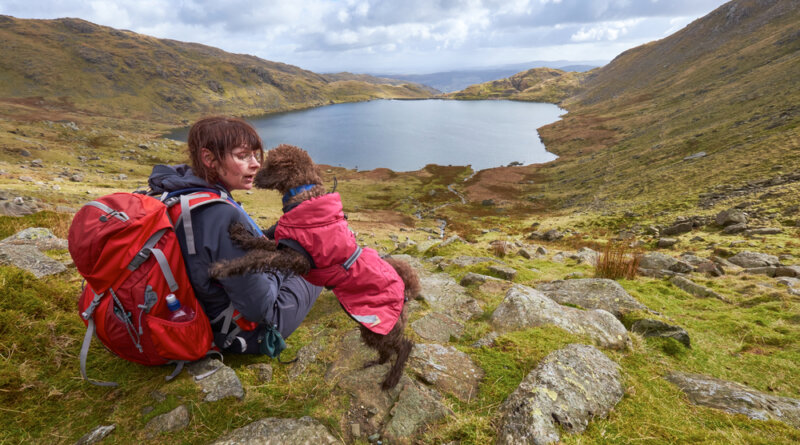Top Tips For Backpacking With Small Dogs
Backpacking with Small Dogs By Beatrix Potter |Published 06-23-2020
As dog lovers, we all know the benefit that regular exercise provides our pooch. For many people, that walk each morning is a massively valuable element of our routines – but I won’t blame you if you’re starting to find the park a little monotonous.
Fortunately, you’ll find that almost every breed of dog thrives in the great outdoors, and the mutual joy to be had of backpacking with your dog is waiting just around the bend in the trail.
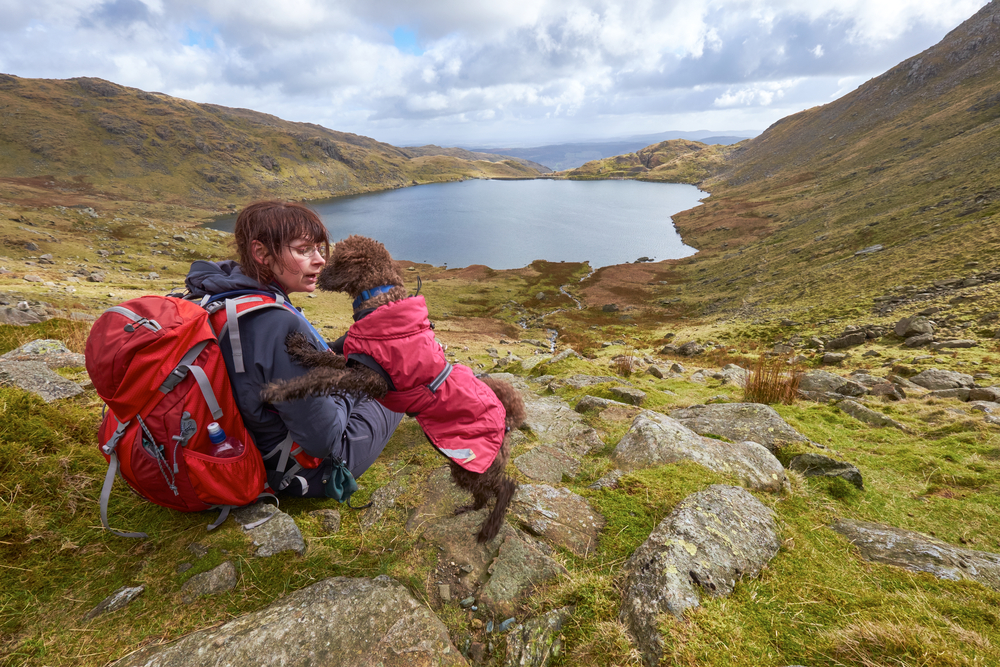 Paws on the Trails: Tips for Backpacking with Small Dogs
Paws on the Trails: Tips for Backpacking with Small DogsBackpacking With Small Dogs: Planning Tips
At first, however, going on a big adventure with a small dog can be pretty intimidating. For a start, once you venture beyond the confines of the park, there are a lot more complexities at play. Some managed wildernesses aren’t dog friendly, and others may pose inherent risks to your pooch if you’re not careful.
Questions about what your dog can handle, the gear you might need, and every eventuality that might arise are sure to be at the forefront of your mind. After all, we all want to take the best care we can of our four-legged friends.
This guide for backpacking with your dog will answer all these questions and more, putting your mind at ease and letting you relax on the trails. Dogs make the greatest hiking companions of all, full of boundless energy and enthusiasm.
Hiking and backpacking with the pooch can be an incredible bonding experience, so pick up these tips, get the gear, and hit the trail!
Training Hikes: Before Backpacking with Small Dogs
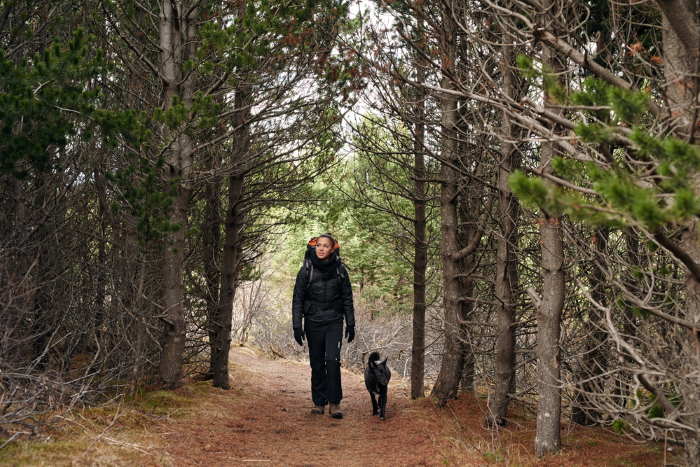 Training Hikes: Before Backpacking with Small Dogs
Training Hikes: Before Backpacking with Small DogsBefore setting off on any big adventure, make sure your pooch is appropriately trained for the sort of distances and climbs, you’re going to be undertaking.
Some small breeds, bulldogs, for example, will struggle on any long hike, and puppies shouldn’t be taken on substantial hikes because they can be at risk of growth plate injuries. However, most breeds will enjoy long days out on the trails, if they’re trained for it.
Building up your mileage on shorter hikes around the city or further afield is the best way to start preparing your dog for a big day. If you’re building up to multi-day hikes with your dog, then try doing a few long days back to back to see how well they’re recovering.
While you’re building up the mileage, it’s essential to pay close attention to how your four-legged friend is faring. If your dog is trying to keep up with you, it may not be obviously exhausted until it’s too late.
The signs of exhaustion in a small dog can include excessive panting and glazed eyes. There are a range of backpacks built to carry small dogs, so if you’re worried about pushing the pooch too far, these could be a good investment!
Picking The Right Trail For You (Both)
The first step on any outdoor adventure is picking the right trail for you and your dog. First, be sure to check that if the path is in a managed wilderness, you’re fully informed on any rules they may have for dogs – dogs may need to be kept on a lead at all times.
If there’s livestock, ensure you’re aware of where you may encounter it, and if it’s your dog’s first time encountering sheep or cows, use extra caution as you may be surprised by how they react. Remember, in some countries such as the UK, it’s actually a criminal offense to chase livestock.
Once you know the local rules and regulations, make sure the trail itself will be appropriate to your dog. Try to find clear trails that aren’t surrounded by thick vegetation so you can always keep sight of your pooch, and softer trails such as dirt paths are better for paws than hard rocks.
Shady trails are better for dogs who are prone to overheating, and a quick glance at the map can often inform you about water sources. Despite these concerns, there’s sure to be a wealth of appropriate trails in your area, so go forth and explore!
Getting Geared Up For Backpacking with Small Dogs
In any outdoor excursion, it’s crucial to have the appropriate gear for the trip. When you’re bringing a beloved pet along with you, this is especially important. If you’re facing cold days or nights, bringing extra layers for your dog may be necessary.
For hot days investing in a cooling vest can help your dog keep their temperature down. If you’re camping out, you’ll need to bring a sleeping pad for your dog, these are available to buy, but often an old sleeping mat of your own can be cut down and is just as suitable.
A spare towel can be an essential item if your dog has a habit of finding the muddiest spots – you won’t want that mud transferred into the tent!
Dog or Packhorse?
When going backpacking with your dog, you’ll need to bring his or her food, poop bags, and if there isn’t water on the trail and extra supply to keep them hydrated.
This can add a serious bit of weight to your own pack, and one way to manage this is to turn your pooch into a packhorse.
“A doggy backpack can be super useful when hiking with your pooch as it lets you share the load – just make sure you find something that fits comfortably around the chest.
This fit is especially important with small dogs as a loose fit can create chafing and discomfort for the pooch,” says Valeria Denis, a writer at PaperFellows.
Be sure you don’t overload your dog when starting out. Some dogs will manage to carry up to 25% of their body weight, but trying 10% at first is a good rule to make sure your dog is comfortable.
Backpacking with Small Dogs: Choose Durable Gear
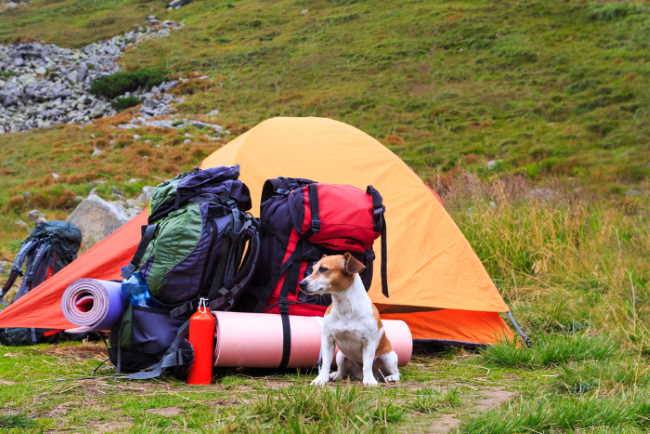 Backpacking with Small Dogs: Choose Durable Gear
Backpacking with Small Dogs: Choose Durable GearWe all love the feeling of traveling light and fast on the trails, but when you’re going overnight with the pooch, it’s better to leave the good gear at home.
Lightweight equipment is often quite fragile, and dogs aren’t delicate at the best of times. Make sure everything is made of thick, durable fabrics, and bringing a second groundsheet for the tent can ensure the base isn’t punctured by doggy claws.
Get To Know Doggy First Aid
Make sure you’re prepared to handle any mishap that may occur on the trail by familiarising yourself with the unique needs of dog first aid.
Don’t assume that your regular first aid kit will have everything your dog needs – trail medical kits are available to purchase and leaving without one isn’t worth the risk to your pooch.
These include things your usual kit may not, such as hydrogen peroxide to induce vomiting if you catch your dog consuming something it shouldn’t be.
Beyond the medical kit, you should know how to deal with minor injuries that could occur. Insect and plant stings are common, and stingers can be painful when embedded in the paw of a dog, but often these can be simply plucked with a pair of tweezers.
Dog’s soft paw pads are often a site of injury on the trails so if your dog seems to be limping it’s often worth checking the paws before assuming they’ve stressed or strained something.
If you know you’ll be encountering rough terrain then investing in a set of hiking booties that protect your dog’s paws could be the way to go.
Know Small Dog Nutrition
For a hard day of hiking, your dog will need to consume many more calories and drink much more water than they normally would. Most likely, your dog is going to come to love the big days out with you, but they’ll need to be properly nourished!
To keep your dog hydrated without wasting water it can be handy to bring a collapsible bowl and a water bottle specific to your dog – anything he or she doesn’t drink can be returned to the bottle.
“Bringing along extra treats are a great way to keep your dog’s energy (and morale!) up over the course of a long day. You can even use the extra treats as a way of introducing your dog to strangers along the trail – giving other hikers a treat with which to win your dog’s affections can be a great way to break the ice at a campsite!” suggests Anna Hill, a pet blogger at SimpleGrad.
Leave No Trace
The ethic of leave no trace applies just as much to your dog as it does to you, so make sure you’re not leaving your pooch’s waste along the trail.
In some areas it’s acceptable to bury waste under certain conditions (6″ deep, and nowhere near a water source) but in other areas with fragile ecosystems it’s better to pack it out entirely so make sure you have enough poop bags for the duration of the trip!
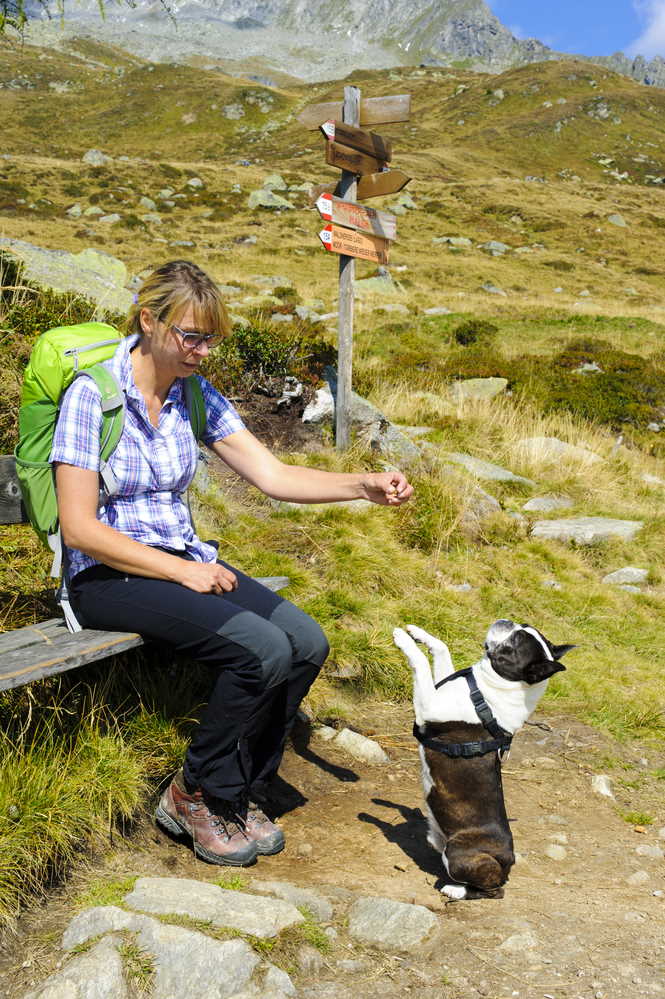
Last Words on Backpacking With Small Dogs
Hiking and backpacking with your dog can be wonderfully rewarding and there’s nothing quite as magical to me as waking up in a tent with my dog, ready for a new day of adventure.
Hiking can be tough and, if you’re unprepared, even dangerous so to care for your dog as best you can it’s essential that you prepare them well and stay attentive to their wellbeing on the trail.
After just a few trips to the trails with your dog you’re sure to see the tail start wagging as soon as you bring out the backpack!
Author Bio
Beatrix Potter is a writer at the StateOfWriting.com and OXEssays.com websites. She loves running and hiking on nearby trails, and always has her energetic pup as a companion.
Did You Find Backpacking With Small Dogs Helpful?
Does This Article Deserve Your Thumbs Up?
We always appreciate your support and encouragement. Your thumbs up means so much to us.

Free Monthly Newsletter
Sign Up for Our Free Newsletter and get our Free Gift to You.
my E-book, The Top 10 Mistakes People Make When Choosing a Dog (and how to avoid them)
If you enjoyed this page, I’d love it if you’d let me know. Just click the button below. Thank you.
Sharing is Caring

